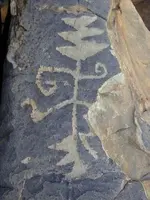Dear Real de Tayopa;
One should never use Troy, or Ilium, as an example of a *legend* my friend. Troy was a REAL city, with a real population, a real king and a very real history. This has been proven time and again, not only by the vast amounts of surviving documentation but by the physical evidence as well, to include coinage, pottery, artworks, and other surviving pieces from the era. Taking this vast mountain of evidence into serious consideration, there was never any doubt that Troy exists, and the only question remained was WHERE was Troy located.
Even now the archies are not 101% positively sure that they've found Troy or even if they have discovered only ONE Troy, as there may have been other Troys built in the vicinity of the older ones. Once more, that the city existed was never in doubt, only it's location.
And now to tackle the legend of Cibola, my friend. Cibola was an OLD legend before Columbus was even concieved, to give you an idea of the age of the legend of the 7 Fabulos Cities of Cibola and Quivara. The myth started around 1150 when the Moori invaded and conquered Merida, Spain. According to legend, seven Roman Catholic Bishops fled Merida for their lives and they took with them the fabulous wealth of the city. They then travelled to a land far to the East, across the Atlantic ocean, where the Bishops then founded the twin cities of Quivara and Cibola. Eventually the tale reached such proportions that each Bishop established His own city and kingdom, built almost entirely from gold and precious gems.
The myth is wonderful in the broad strokes and it's only when one investigates further that the tale breaks down. First, Merida only had one Bishop and the particular Bishop who presided in Merida had passed away , AVM, almost two years before the Moors invaded and the Vatican had not gotten around to appointing a new one, therefore the city of Merida was without a Bishop when the Moors invaded.
Next, Merida did not have any riches to speak of, fabulous or otherwise, my friend. Most of the riches of Spain were housed in either Seville or Toledo, and Merida happened to be nothing more than a quiet country village, in fact it still is little more than a quiet country village. Next, there are over 100 variously recorded names for the 7 Bishops, yet oddly enough not a single one of those name exists in the Vatican archives.
In short, the lost cities of Cibola and Quivara make an excellent bedtime story for children, just as it did in the 10th century, however 6 year old children do not tend to ask a lot of questions, either.
Your friend;
LAMAR
One should never use Troy, or Ilium, as an example of a *legend* my friend. Troy was a REAL city, with a real population, a real king and a very real history. This has been proven time and again, not only by the vast amounts of surviving documentation but by the physical evidence as well, to include coinage, pottery, artworks, and other surviving pieces from the era. Taking this vast mountain of evidence into serious consideration, there was never any doubt that Troy exists, and the only question remained was WHERE was Troy located.
Even now the archies are not 101% positively sure that they've found Troy or even if they have discovered only ONE Troy, as there may have been other Troys built in the vicinity of the older ones. Once more, that the city existed was never in doubt, only it's location.
And now to tackle the legend of Cibola, my friend. Cibola was an OLD legend before Columbus was even concieved, to give you an idea of the age of the legend of the 7 Fabulos Cities of Cibola and Quivara. The myth started around 1150 when the Moori invaded and conquered Merida, Spain. According to legend, seven Roman Catholic Bishops fled Merida for their lives and they took with them the fabulous wealth of the city. They then travelled to a land far to the East, across the Atlantic ocean, where the Bishops then founded the twin cities of Quivara and Cibola. Eventually the tale reached such proportions that each Bishop established His own city and kingdom, built almost entirely from gold and precious gems.
The myth is wonderful in the broad strokes and it's only when one investigates further that the tale breaks down. First, Merida only had one Bishop and the particular Bishop who presided in Merida had passed away , AVM, almost two years before the Moors invaded and the Vatican had not gotten around to appointing a new one, therefore the city of Merida was without a Bishop when the Moors invaded.
Next, Merida did not have any riches to speak of, fabulous or otherwise, my friend. Most of the riches of Spain were housed in either Seville or Toledo, and Merida happened to be nothing more than a quiet country village, in fact it still is little more than a quiet country village. Next, there are over 100 variously recorded names for the 7 Bishops, yet oddly enough not a single one of those name exists in the Vatican archives.
In short, the lost cities of Cibola and Quivara make an excellent bedtime story for children, just as it did in the 10th century, however 6 year old children do not tend to ask a lot of questions, either.

Your friend;
LAMAR








